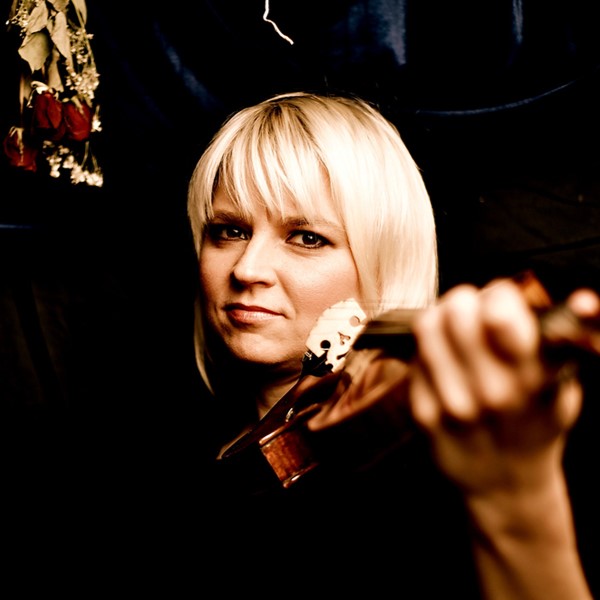
Sunday, January 21, 2024 at 2:00 pm
St. Andrew's United Church, Halifax
Featuring Julia Wedman, leader/violin
Christopher Bagan, harpsichord
Marie-Laurence Primeau, recorder
Alexa Raine-Wright, recorder
Thomas Baeté, viola da gamba
Jessy Dubé, viola da gamba
Danielle Johannes, oboe
Curtis Dietz, piccolo trumpet
Jennifer Jones, violin
Susan Sayle, viola
Carolyn Farnand, viola
Symphony Nova Scotia
| Johann Sebastian Bach (1685-1750) Brandenburg Concerto No. 2 in F Major I. Allegro II. Andante III. Allegro assai Marie-Laurence Primeau, recorder Danielle Johannes, oboe Curtis Dietz, piccolo trumpet Jennifer Jones, violin |
13' |
| PAUSE | |
| Johann Sebastian Bach (1685-1750) Brandenburg Concerto No. 6 in B-flat Major I. Allegro II. Adagio ma non tanto III. Allegro Julia Wedman, violin Susan Sayle, viola Carolyn Farnand, viola Thomas Baeté, viola da gamba Jessy Dubé, viola da gamba |
18' |
| PAUSE | |
| Johann Sebastian Bach (1685-1750) Brandenburg Concerto No. 4 in G Major I. Allegro II. Andante III. Presto Julia Wedman, violin Marie-Laurence Primeau, recorder Alexa Raine-Wright, recorder |
17' |
Continuo: Rachel Desoer, cello; Max Kasper, bass; Hilary Brown, guitar; Gabe Azzie, bassoon; Marie Bouchard, harpsichord.
Additional players: Carrie VanSlyke, viola.
JOHANN SEBASTIAN BACH (1685-1750)
From 1717 to 1723, Bach was the music director at the court of Prince Leopold of Anhalt-Cöthen. Since the official religion there was Calvinist, Bach was not called on to produce music for the church. Instead, he concentrated on secular, instrumental works. He later referred to this time as the happiest of his life, and after his move to Leipzig he attempted unsuccessfully to find another position at one of the small princely courts of Germany. Many of these aristocrats tried, as far as their means allowed, to emulate the style of the king of France at Versailles. A musical establishment, including at least a small orchestra to entertain the members of the family and their guests, was considered an important amenity. Prince Leopold was a cultured and tolerant young man, who allowed his subjects religious freedom, although he was a Calvinist himself.
He sang and played quite well himself, and appreciated the fact that in Bach he had a very distinguished musician in his service. In 1718, Bach was sent to Berlin to purchase a new harpsichord for the Cöthen court. While there, he met the Margrave of Brandenburg, who commissioned a set of concertos from him. After a considerable delay, Bach sent off the scores of the six Brandenburg Concertos with the customary obsequious letter of dedication (in French), in which he “most humbly begged his Highness not to judge their imperfection with the rigour of the fine and delicate taste which the whole world knows his Highness has for musical pieces” but hoped that he would regard them as an expression of “profound respect and most humble obedience.”
The six concertos are not a set of the kind usually composed for a commission early in the 18th century. They are for quite diverse instruments, calling for the highest level of virtuosity, and they are distinctly experimental, both in their forms and their textures. Another unusual feature is that all six concertos are in major keys. Minor keys at that time did not necessarily imply a subdued or melancholy mood, but all the Brandenburg Concertos are bright, cheerful works. It seems likely that Bach did not actually compose these works for the Margrave, but sent ones that he had previously performed with his own orchestra. Th e presentation scores are very neatly written, but there are some obvious mistakes, as though the composer’s mind was elsewhere when he copied them out. Th ere is no evidence that the Margrave ever had them performed, and in any case his orchestra could probably not have coped with their technical demands.